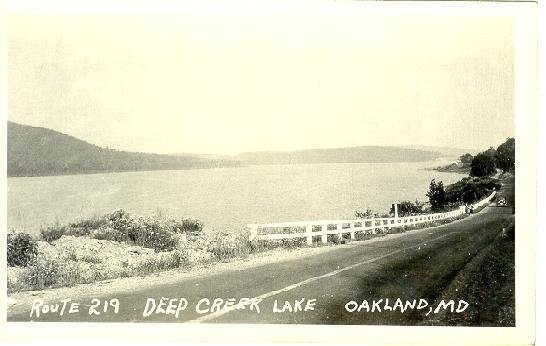Category:Uncategorized
Pickleball January Schedule Announced
Pickleball enthusiasts combine efforts with the Continuing Education and Workforce Development division of Garrett College to offer instruction and playing time of this rapidly growing sport. Pickleball is played at the Oakland Community Center gym (old armory) on Mondays, Wednesdays and Fridays from 3 p.m. to 5 p.m. beginning on January 2. The Garrett College Community Aquatic & Recreation Complex (CARC) will continue to offer play times on Tuesdays, Thursdays, and Sundays. For playing times at the CARC, contact 301-387-3786 or visit online at www.gccarc.com.
Pickleball combines elements of badminton, tennis, and ping pong and is played with paddles and a plastic ball, similar to a whiffle ball. Equipment, techniques, and rules of the games will be discussed while participants experience a new way to work out and meet new people. Tennis shoes are required but all other equipment will be included.
For additional information or to register, persons may contact Garrett College Continuing Education and Workforce Development at 301-387-3069.
For more information, click here.
RINGING IN THE NEW YEAR WITH HOPE AND HEALING
Garrett Regional Medical Center (GRMC) has much to celebrate as it approaches the first anniversary of having the WVU Medicine Cancer Institute located at the hospital. After opening its doors to patients in January of 2016, the Center has generated stories of hope and healing, continued community support, and plans for expansion.
In many areas of the world, it is customary to chime a bell at midnight to celebrate the New Year. When the bell rings at GRMC this New Year, it will be a much sweeter sound. The ringing of a bell in the cancer center indicates that a patient has completed a regimen of chemotherapy and gone into remission. A few days before Christmas, and almost a year since he started treatment, Jim Dunn stood in the WVU Cancer Institute and pulled sharply on the cord of the healing bell. The ring of the chime was met with cheers, clapping and smiles from staff that aided him through his journey.
Dunn, who was initially travelling to Morgantown for treatment, was the first patient to receive chemotherapy at the cancer center when it opened. The center being close to home and the center’s caring staff helped to make the experience of receiving treatment more bearable.
“I can’t think of a better way to celebrate the Center’s one year anniversary, than with the healing of a patient who has been receiving treatments here since the day we opened”, said Gina Artice, cancer patient care navigator. “The bell signifies an achievement and provides patients with hope and positivity. Overcoming an obstacle like this deserves to be recognized in a big way.”
The success of the cancer center has given GRMC the opportunity to expand its walls and services to continue to provide exemplary cancer care to the patients of the Garrett Region. GRMC has recently commissioned Gosnell Builders to coordinate the expansion project. The Center’s expansion plan includes many opportunities for GRMC to enhance the facility and to better provide for the care of the people from the region. The expansion plan includes a cosmetology area for patients to experience the Look Good, Feel Better program, a meeting room for a community support group, dedicated office space for the operation of Cindy’s Fund, a library, and a pharmacy.
The ability to expand the Cancer Center is made possible, in large part by the generosity of the local community. Generous lead gifts for this project were provided by James and Shirley Bailey; The Sharps and Gnegy Families; Richard, Ellen, Tracy and Steve Stuck; The Baxa Family Foundation; BJ Gallagher; and The WGW Community Youth Cup. “Donors like this have generated financial support that will touch the lives of many cancer patients and their families. Their generous support has created a lasting legacy to cancer care in our region that will live into perpetuity”, said Mark Boucot, president & CEO of Garrett Regional Medical Center; he continued, “I don’t know how to express my gratitude to everyone who has contributed to the center, other than to say that because of what they have done, people will be healed; and people from our community will be blessed.”
For more information, click here.
Lake Buy-Down Opportunity
Check out this email from the Deep Creek Lake Property Owner’s Association.
|
December 22, 2016
Folks,
We have been informed that the opportunity to buy-down lake front property adjacent to property you own is still in effect. Following is the information we received: “A request by the Department of Natural Resources to re-authorize Secretaries of DGS, DNR, or their designees to execute deeds and associated documents for the sale of Deep Creek Lake buy-down parcels. The buy-down program offers owners of property adjoining Deep Creek Lake the right to purchase State land adjacent to their property. The property will be sold for $0.39/sq. ft. plus expenses for title, survey and the State’s $250 administrative fee. The sale of the parcels will be subject to a conservation easement that retains the character of Deep Creek Lake (Item 8-RP of the Department of General Services’ Agenda);”
If you wish to take advantage of this opportunity you may contact the State Department of General Services (DGS). The contact there is Tanja Rucci at 410-767-4303, tanja.rucci@maryland.gov.
Cheers,
Bob Hoffmann President |
Mountain Maryland Gateway to the West Heritage Area Announces FY2017 Mini-Grant Awards
The Mountain Maryland Gateway to the West is pleased to announce the recipients of the FY2017 Mini-grants awarded through the Heritage Area. Over $3,750 was awarded to local organizations to provide funding for innovative exhibits, tours, events, planning and projects which build upon interpretive themes identified in the Heritage Area’s Management Plan. These include: Transportation, Man and Nature, Historic Recreation, and Cultural Uniqueness. Projects seek to attract cultural and heritage tourists to the region. Recipients must match the grant dollar for dollar and complete the projects by May 31, 2017. Grant funding is still available until the $10,000 cap is met and applications and guidelines may be found at the Garrett Heritage website, www.garrettheritage.com.
FY2017 Mini-Grant Awards:
End of the Line Bookstore Signage – $165.50 awarded to the non-profit organization End of the Line Bookstore to create and install signage for the bookstore to create awareness to visitors and residents.
Garrett County Celtic Festival – $2,000 awarded to the Highland Festival of Garrett County, Inc. for assistance of event elements including advertising, children’s village and performers/demonstrators.
Meshach Browning Trail System Signage – $1,135 awarded to the Deep Creek Lake Lions Club to create and install trail signage depicting the story of famous local hunter, Meshach Browning.
Enabling Equipment for Digital Oral History – $476 awarded to the Garrett County Historical Society to film and record oral histories from Garrett County residents.
“We are excited to support these local projects by leveraging the heritage area funds we receive through our management grant from the Maryland Heritage Areas Authority,” said Jen Durben, Heritage Area & Groups Director. “Many local projects would not be possible without mini-grants and these projects help promote heritage tourism to Garrett County.”
About The Mountain Maryland Gateway to the West Heritage Area
The Mountain Maryland Gateway to the West Heritage Area is one of 13 certified Heritage Areas by the state of Maryland. Established in September of 2011 and managed by the Garrett County Chamber of Commerce, the Heritage Area’s mission is to engage public and private partners in the commitment to preserve historical, cultural and natural resources for sustainable economic development through heritage tourism. The Mini-Grant Program is made possible through a Management Grant that the Chamber receives from the Maryland Heritage Areas Authority (MHAA), a state heritage organization and program of the Maryland Historical Trust.
For more information, click here.
Frostburg bars use of city land and water for fracking
FROSTBURG, Md. (AP) – The western Maryland city of Frostburg is banning the use of city land and water for fracking.
The Cumberland Times-News (http://bit.ly/2gT17kD ) reports that the City Council voted unanimously Thursday to adopt an ordinance prohibiting drilling and extraction of oil and natural gas on city-owned land. The ordinance also prohibits sales of city-owned water for those purposes
The drilling technique called hydraulic fracturing, or fracking, uses highly pressurized water and chemicals to fracture rock formations and release trapped gas.
The protected land includes about 1,800 acres of the Piney Reservoir watershed in neighboring Garrett County. The reservoir is the largest source of Frostburg drinking water.
Anti-fracking activists also are seeking a ban on fracking within the Frostburg city limits.
A statewide moratorium on fracking is set to expire in October.
For more information, click here.













